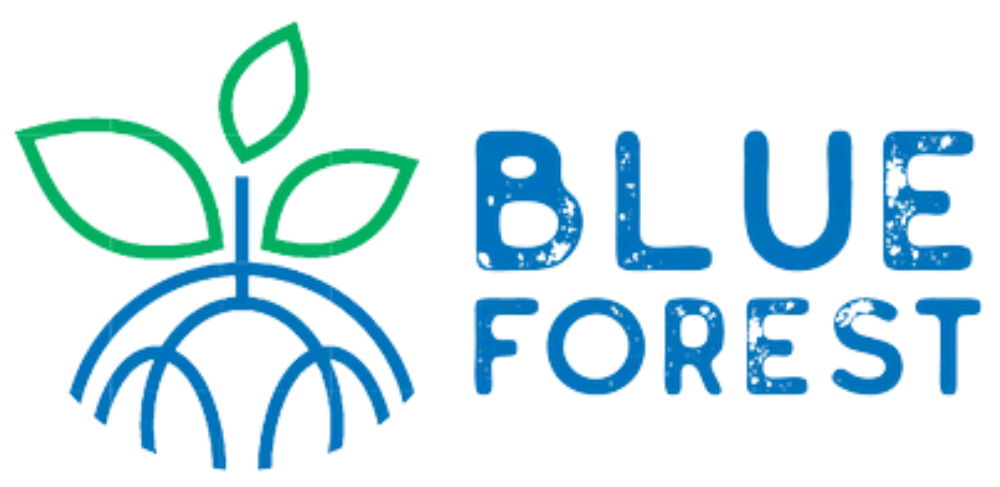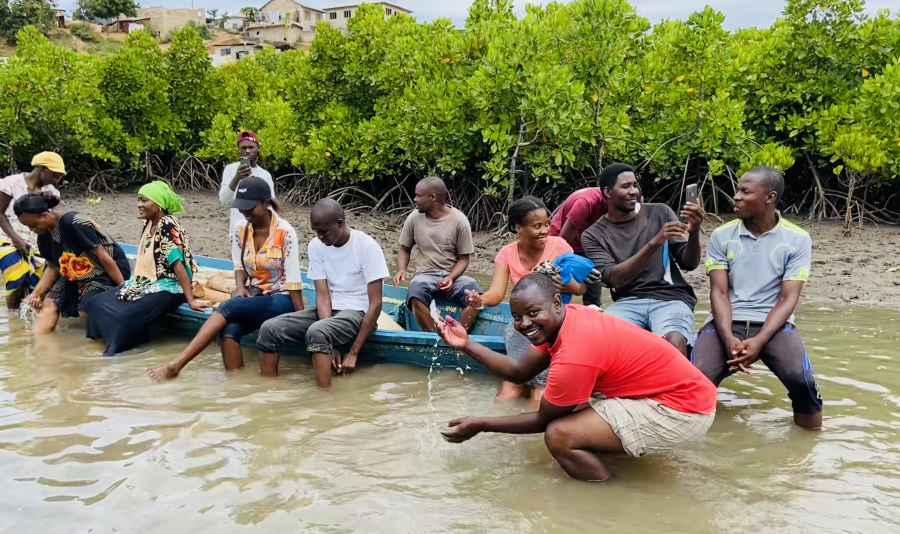The most recent IPCC report published by the UN finds that CO2 emissions have risen across all major regions since last assessed in 2014. Most notably, the UN has found that 45% of those emissions stem from deforestation and that coastal forests, like mangroves, are 4 times more likely to get cut than terrestrial forests.
The IPCC report also states that the restoration and conservation of carbon-rich ecosystems can mitigate climate change significantly via carbon sequestration while also creating jobs and food for surrounding communities, purifying water, cleaning air, coastal protection, generating biomass, and regenerating biodiversity by providing wildlife habitats. In a nutshell, to serve as a great blue wall.
So what should we do about it?
Strengthening the relationship between mangrove and mankind is the best way to achieve climate success.
This success can be achieved through sustainable development projects which restore mangroves while building coefficient social infrastructure supported by environmental financing tools
Mangrove restoration provides the carbon credits that finance the project while helping the investors meet their UN SDG goals. It also fosters sustainable income from interdependent communities and delivers on the ocean management so essential for coastal protection and storm damage control.
Empowering the Forest Protectors
The majority of carbon sink and land conservation potential exists in developing countries struggling with food security, inclusion, and scarce climate financing still at levels reportedly lower than fossil fuel investments.
Science-backed evidence has proven that investing in a sustainable coastal community can:
“Offer(s) significant near-term mitigation potential at relatively low cost and can provide 20-30% of the 2050 emissions reduction described in scenarios that likely limit warming to 2°C or lower.” IPCC 6
This presents an opportunity to solve social inequities caused by climate change, exposing the world’s most vulnerable to increasingly harsher conditions they aren’t equipped to face. Pope
Francis has called the global failure in climate action a “brutal act of injustice toward the poor”. Droughts, supercharged storms, and suffocating heat waves have already furthered the divide between classes in a racially stratified global economy.
As world temperatures rise further along with sea levels, while oceans acidify and IPCC reports forecast some 700 million climate refugees in Africa alone, it becomes increasingly clearer that climate health is inextricably linked to social justice.
Recovery mechanisms in Agriculture, Forestry and Other Land Use (AFOL) can support communities’ livelihoods, boosting food and water security while nurturing biodiverse ecosystems of hundreds of species of wildlife.
Partnership for coastal protection
The International Union for Conservation of Nature (IUCN) and Blue Forest have partnered to implement the latest research and technology for a net-zero international economy. Pillared on sustainable best practices for climate resolution and social justice, our Mozambique project uses scientific methods and assessments to offer nature-based solutions in solving environmental damage caused by human activity.
As proponents of a community-based adaptation method, IUCN empowers communities to prepare for climatic stress by raising their awareness of pathways while supporting their perspectives and cultural preferences. Involving local communities directly and serving their interests is the most effective approach to achieving long standing gains toward coastal protection.
By ensuring the functionality of the relationship between local communities and their natural surroundings, the community-based adaptation method aims to be as realistic as possible about all elements intertwined in the vulnerable human and wildlife ecosystem of the mangrove habitat.
Learning from Past Mistakes
As stated on the Blue Forest website, a forest restoration project using just one non-native species could result in poor soil biodiversity, ultimately making it more costly or impossible to sustain a diverse forest in the future. Similarly, restoring a mangrove forest to reduce the risk of storm damage could be doomed from the start if upstream and downstream processes are not considered. Lack of water use considerations in certain projects could lead to too much withdrawal, creating pressure on local communities. Funders, investors, and decision-makers need to be confident that the Nbs initiatives they support are effective and scalable, and consider potential externalities. Yet, many may not have the expertise or resources to help them analyze and evaluate NbS projects. The IUCN Global Standard helps fill this gap. We would not be able to fill this gap however without collaboration with partners who are passionate enough to do this hard, meaningful, and rewarding work.

